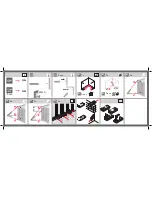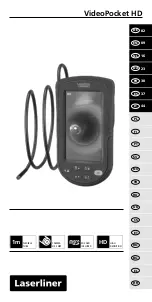
AR-G2/AR 2000ex/AR 1500ex Getting Started Guide
Page 17
Chapter 1:
About the AR Series Rheometers
Overview
This chapter reviews the history of rheology, and traces the development of combined motor and trans-
ducer (CMT) rheometers. The AR-G2, AR 2000ex, and AR 1500ex are introduced, and brief descriptions
of their main components and accessories are given. Please read this chapter carefully to familiarize
yourself with the terminology used throughout this manual.
A Brief History of Rheology and the Development of CMT Rheometers
In 1929, Professor Eugene Bingham, a physical chemist working at Lafayette College in Pennsylvania,
decided that the study of the deformation and flow of matter was important enough to merit its own title.
On the advice of a Professor of Classics, he coined the term “rheology”, from the Greek rew (rheo) mean-
ing flow. But the discipline of rheology is much older than the word. The first formal scientific description
of a rheological phenomenon appeared in Isaac Newton's Principia Mathematica, published in 1687, where
he suggested that “the resistance which arises from the lack of slipperiness of the parts of [a] liquid, other
things being equal, is proportional to the velocity with which the parts of the liquid are separated from one
another.” Today we would say that the shear stress is proportional to the shear rate, and we would call the
constant of proportionality the viscosity of the liquid. As we now know, Newton's postulate applies only to
a limited class of low molecular weight liquids, over finite ranges of shear rate or stress. Rheology is usu-
ally more concerned with materials whose behavior is non-Newtonian, in that their viscosity is a function
of shear rate or stress. Such materials include polymers, paints, inks, creams, gels, shampoos, drilling flu-
ids, adhesives, and many foodstuffs.
It seems that Newton conducted no experimental work on the viscosity of liquids, and it was not until the
middle of the nineteenth century that work in that area was led by Poiseuille. The operating principle of
most of the early viscometers, including Poiseuille's, was that the fluid was driven by pressure or gravity
through a capillary or other constriction, and the rate of flow measured. Devices of this design are still in
use today, but, although they may have the advantage of simplicity of construction and operation, they
have the drawback that the sample can only be subjected to a finite strain.
However, a great step forward was made in the 1880's when the rotational viscometer was introduced by
Couette and others. In this type of device, the sample is situated either in the annular gap between two con-
centric cylinders, as in Couette's original design, or in the gap between two concentric, horizontally
mounted, parallel platens. One of the cylinders or platens (the stator) is fixed, the other (the rotor) is
rotated, and provided that the rotation can be permanently maintained, there is no limit to the strain that the
sample can be subjected to. In Couette's design, the outer cylinder was fixed, the inner was driven by a
weight connected to it through a series of pulleys. The angular velocity of the rotating cylinder was calcu-
lated from the time taken for the weight to fall. This design is interesting for two reasons, one being that it
was the stress that was controlled (through the weight) rather than the strain or strain rate, the other being
that actuator and detector were mounted on the same axis. It happens that the first of these gave rise to the
term used to describe the successors to this type of viscometer: “controlled stress”. They might alterna-
tively have been described by the second as “combined motor and transducer” (CMT). This term is now
preferred, since modern rheometers can operate in both controlled stress and controlled rate modes.
Summary of Contents for AR-G2
Page 1: ...Revision R Issued January 2011 Getting Started Guide AR G2 AR 2000ex AR 1500ex Rheometers...
Page 12: ...Page 12 AR G2 AR 2000ex AR 1500ex Getting Started Guide This page is intentionally blank...
Page 16: ...Page 16 AR G2 AR 2000ex AR 1500ex Getting Started Guide This page is intentionally blank...
Page 54: ...Page 54 AR G2 AR 2000ex AR 1500ex Getting Started Guide This page is intentionally blank...
















































